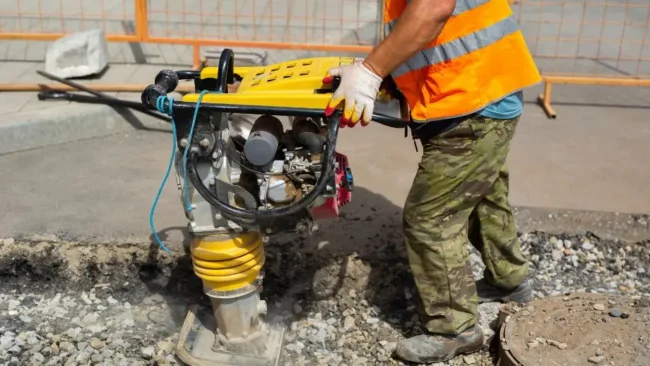Hand-arm Vibration – What you need to know
19 April 2024

What is HAVS?
HAVS is an abbreviation of Hand-Arm Vibration syndrome. Hand-arm vibration affects thousands of UK workers each year, and causes various afflictions such as carpal tunnel syndrome. These symptoms are due to vibration exposure altering the flow of blood, which then results in nerve symptoms and blood circulation damage.
What are the symptoms?
- Nerve symptoms – loss of feeling or tingling which comes and goes.
- Reynaud’s – bouts of Raynaud’s phenomenon on cold, wet and windy days, affecting the ends of one or more fingers, not necessarily caused by the vibration itself.
- Aches and pains in the fingers.
- Loss of grip strength.
- Poor dexterity.
You do not have to have all of the symptoms to have Hand-Arm Vibration Syndrome.
Can HAVS be reversed?
Symptoms may be mild but can progress if work with vibrating tools continues without mitigating measures put in place. In its early stages, HAVS is reversible and can be stopped with mitigating measures. (https://pubmed.ncbi.nlm.nih.gov/11560431/)
If preventive measures are not taken, as HAVS progresses the numbness becomes more permanent due to nerve damage. This can lead to muscle weakness and wasting. Bouts of Raynaud’s phenomenon also become more frequent.
How can I prevent HAVS in the workplace?
Taking steps to ensure that employees are using the correct grip helps to prevent HAVS. Workers should use the loosest possible grip that is still safe, and alternate the position in which they are working as much as possible.
All tools and machinery should be well maintained to avoid HAVS.
What are the workplace regulations around HAVS?
The Control of Vibration at Work Regulations 2005 (the Vibration Regulations), came into force on 6th July 2005 and aims to protect workers from risks to health from vibration. The regulations introduced action and limit values for hand-arm and whole-body vibration.
The regulations also require that employers:
- Assess Vibration Risk
- Assess which employees will be exposed above the Exposure Action Value (EAV).
- Introduce controls to eliminate risk or reduce it to the lowest physically possible level.
- Provide regular health checks to those exposed above the EAV.
Amongst other requirements (https://www.legislation.gov.uk/uksi/2005/1093/contents/made)
Taking steps to avoid HAVS can help you avoid fines and prosecutions.
What are the HAVS Exposure Limits?
The exposure action value (EAV) is a daily amount of vibration exposure above which employers are required to take action to control exposure. For hand-arm vibration the EAV is a daily exposure of 2.5 m/s2 A(8).
You can read more about the HAVs at hse.gov.uk
Do I need to conduct a HAVS Risk Assessment?
The Control of Vibration at Work Regulations 2005 Regulations require employers to keep a record of risk assessments and control actions if you operate machinery or tools that can result in HAVS.
What should a HAVS risk assessment include?
A HAVS risk assessment should consider:-
- How necessary the work is.
- The equipment needed for the job
- How qualified the employee is to use the equipment
- How any foreseeable risks be eliminated (or reduced in severity or likelihood).
- Frequency of exposure — is the equipment used hourly/daily/weekly? Remember: exposure is measured by trigger time; not how long users may be working on a job in total.
- The force of contact — how hard does the user have to grip, or how much pressure must they exert on the equipment?
- Circulation — is the working temperature warm enough? If not, do workers need protective clothing?
Our contact form is available for those who have any questions regarding workplace monitoring and other occupational hygiene concerns.